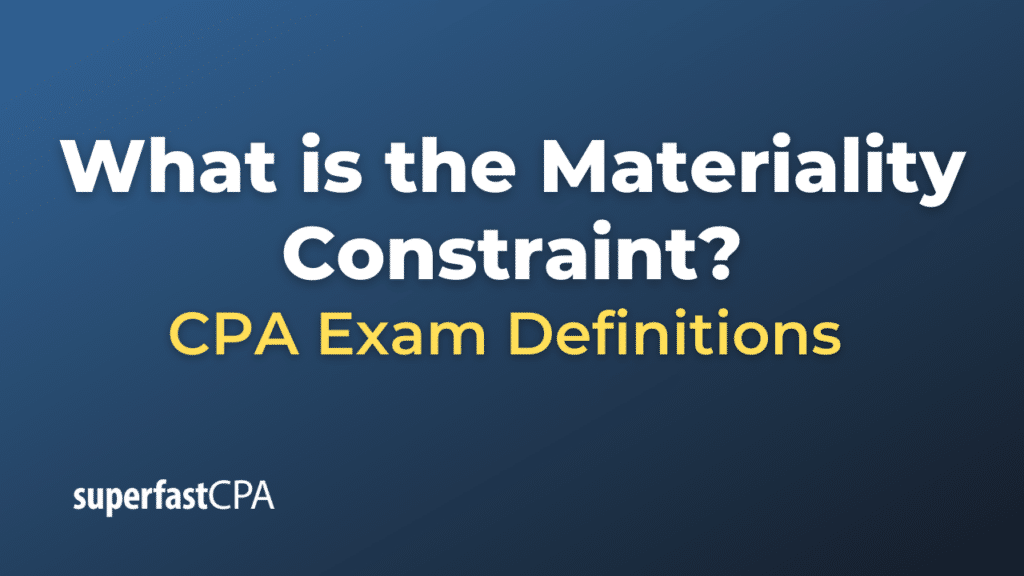Materiality Constraint
The materiality constraint in accounting refers to an exception to generally accepted accounting principles (GAAP) that allows companies to ignore an accounting principle if the net impact on the financial statements is immaterial, or insignificant.
This constraint is a practical acknowledgement that the costs of complying with certain accounting principles might outweigh the benefits in some cases, especially if the amounts involved are very small relative to a company’s overall financial situation.
Materiality is a matter of judgment and depends on both the amount and the nature of the item or transaction in question. In general, an item is considered material if its inclusion or omission would influence or change the judgment of a reasonable person.
For instance, suppose a company buys a small piece of office equipment for $200 and expects it to last for three years. In theory, according to the matching principle, the company should depreciate the cost of the equipment over its useful life (i.e., $67 per year for three years). However, due to the materiality constraint, the company might choose to expense the entire $200 in the year it was purchased because the amount is so small that spreading it over three years would not significantly improve anyone’s understanding of the company’s financial position.
However, it’s important to note that the materiality constraint should not be used to justify misstating or hiding information that would otherwise be important to users of the financial statements. Materiality is not just about the size of a transaction or error, but also the impact it could have on users’ decisions.
Example of the Materiality Constraint
Let’s consider an example to better understand the materiality constraint.
Example:
Suppose a small business purchases a printer for $500, and they expect the printer to last for five years. According to the matching principle in accounting, the cost of the printer should be spread over its useful life. This means the business would depreciate $100 each year for five years.
However, considering the materiality constraint, the business might decide that the amount of $500 is not significant relative to their overall operations and financial position. The process of calculating and recording depreciation each year for five years might involve a degree of complexity and additional administrative work.
Therefore, the business could choose to expense the entire cost of $500 in the year it was purchased. The rationale here is that the difference in their financial statements, whether the printer is expensed all at once or depreciated over five years, is unlikely to materially impact the decisions of users of the financial statements, given the relatively small value of the printer.
This example illustrates how the materiality constraint can simplify financial reporting, but it’s important to note that this approach should be used cautiously. Materiality involves judgment, and what is immaterial for one company might be material for another. Furthermore, even small amounts can be material if they would influence users’ decisions. For example, if multiple small assets were each expensed in full in the year of purchase, the combined amount could become material.














